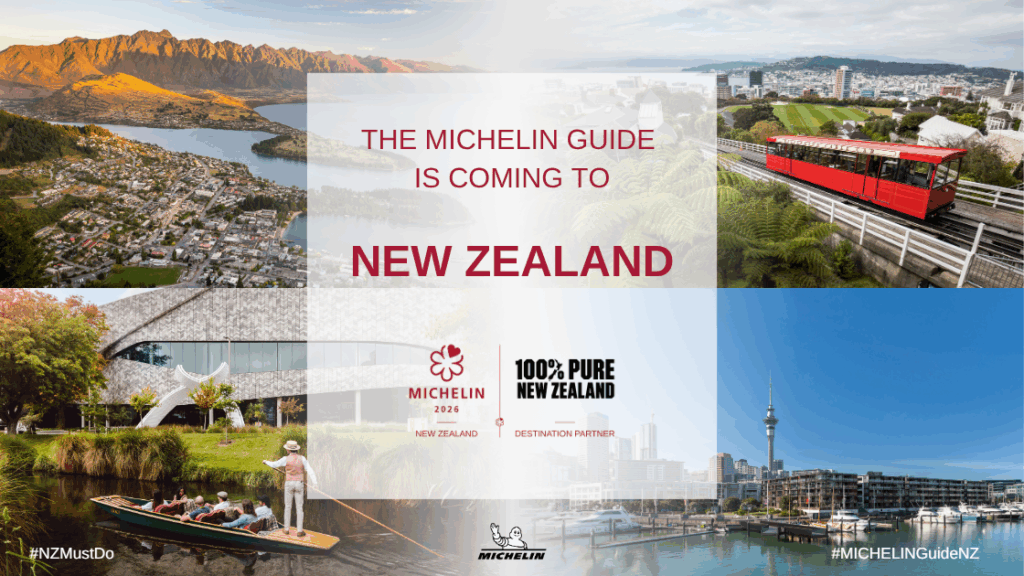The world’s most influential restaurant guide has confirmed its arrival in Aotearoa, marking a pivotal moment for New Zealand’s culinary and tourism sectors.
The MICHELIN Guide will launch in New Zealand in mid-2026, with inspectors already quietly assessing restaurants across Auckland, Wellington, Christchurch and Queenstown ahead of the inaugural selection.
For many in hospitality, this is long-awaited recognition. New Zealand’s chefs and restaurateurs have been working at an international standard for years, drawing on exceptional local produce, strong wine regions and a distinct blend of Māori, Pasifika and global influences. Michelin’s presence provides a globally understood benchmark – stars, Bib Gourmand distinctions and recommended listings – that immediately places those restaurants into the consideration set of well-travelled diners, premium visitors and travel advisors around the world.
Government and industry are positioning the announcement as a strategic win. Tourism leaders see a clear link between Michelin recognition and the growth of high-value culinary tourism in markets such as Japan, Singapore, France and the Nordic region. New Zealand’s inclusion puts its key visitor hubs into that same conversation and provides a powerful new proof point for destination marketing, trade training and itinerary design.
The focus on four cities reflects the breadth of New Zealand’s food story. Auckland offers a cosmopolitan, harbour-side dining landscape where contemporary New Zealand cuisine sits alongside strong Asian and Pacific influences. Wellington’s compact, creative scene is renowned for chef-driven dining rooms, specialty coffee and a strong commitment to sustainability. Christchurch is increasingly defined by access to Canterbury’s farms, producers and coastline, underpinning a growing number of value-led, produce-focused kitchens. In Queenstown and Central Otago, alpine landscapes, pinot noir, game and high-country lamb give chefs a distinctive palette with strong appeal for international visitors.
For the broader tourism and travel trade community, Michelin’s move creates new opportunities. Restaurants recognised by the guide will become natural inclusions in premium FIT itineraries, pre- and post-conference programmes, incentive trips and high-end group series. Travel advisors and tour operators gain an additional layer of confidence when recommending dining experiences, particularly for corporate and luxury clients who already use Michelin as a reference point in Europe, North America and Asia.
The impact is unlikely to be confined to the very top tier. The Bib Gourmand category, which highlights quality cooking at moderate prices, has historically been important in other destinations, drawing attention to neighbourhood bistros, casual concepts and local favourites that reflect how residents actually eat. In New Zealand, this could bring well-deserved visibility to a wider range of operators, from modern Māori and Pasifika kitchens to smart, produce-driven eateries in city fringe suburbs.
For New Zealand’s hospitality sector, the coming18 months will be a period of quiet intensity as inspectors continue their anonymous work. The launch of the MICHELIN Guide in 2026 will not only be a roll-call of stars and Bibs, but a statement to the world about the quality, character and ambition of New Zealand dining – and a fresh tool for the travel trade to position the country as a destination where business, leisure and exceptional food increasingly go hand in hand.


